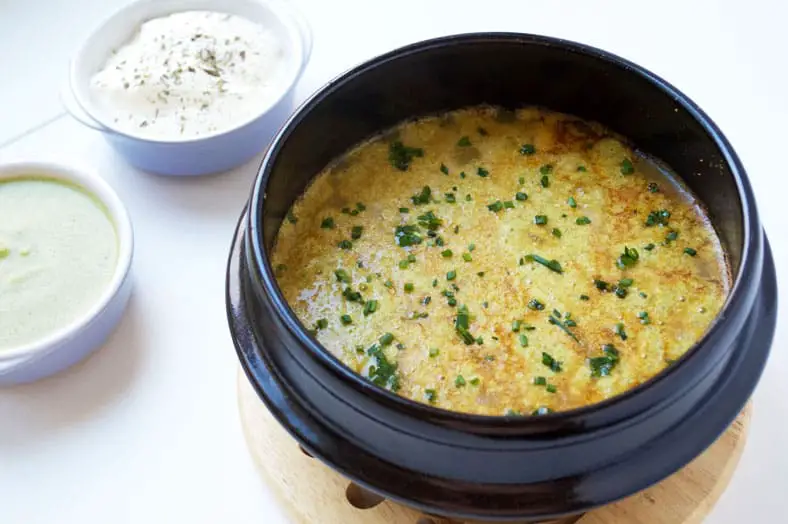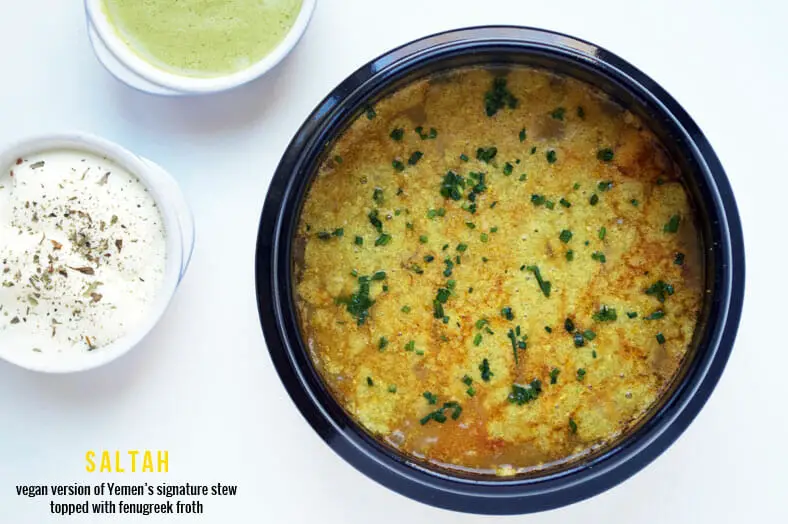Saltah is a hearty stew that is Yemen’s undisputed national dish. The Yemeni people have delighted in this comforting meal for hundreds of years, even back to the times when Yemen herself was beloved by the likes of the ancient Greeks, Romans and Ottomans.

SALTAH: THE OTTOMAN EMPIRE, SANA’A, AND AN HERBACEOUS HERB DUO
For a country like Yemen – a country with major geographic significance whose history is easily traceable through the millennia – it is somewhat ironic that origins of its national dish are unknown. Like so many recipes with national significance, there are conflicting accounts about its genesis.
THEORY 1: THE TURKS IN YEMEN
One of the two prevailing theories regarding the origin of our mysterious stew coincides with the history of the Ottoman Empire and their two forays into Yemen.
While the Ottomans expanded rapidly throughout its 600 year history across Middle East and Eurasia, why did they bother with Yemen? After all, Yemen and Somalia would ultimately be the furthest and most remote outposts of the Empire.
Perched at the tip of the Arabian Peninsula, Yemen enjoys borders on the Red Sea and the Gulf of Aden. At this very significant corner of the world, these waters were essential to the critical trade route between Europe and India when the Ottoman Empire was at its peak. If the Ottomans expected to compete with the East India Company – the dominant trading force of the 16th century – they had to control Yemen.
You see, outpost or not, the Ottoman desire for this Yemeni outpost was for very shrewd geopolitical reasons.
So the Ottoman Empire needed Yemen… but the Yemeni people didn’t need the Ottomans. Ottoman forces first arrived in the 1500s but were expelled less than 100 years later. They returned in the 1800s, but once again the Yemenis revolted and sent the Ottoman Empire packing. However, on these ill-fated attempts to subdue the spirited Yemeni people, the Ottomans left behind a very critical artifact: the first recipe for saltah!
While the Yemeni people weren’t keen for their would-be Ottoman occupiers, they were remarkably quick to adapt this remnant Ottoman stew. Those who believe this “Turkish theory” maintain that the stew was originally made as a creative way to dress up leftovers, which is a magnificent thought (or should we say, after thought).
Notice Title
If you like this stew, you’ll love our other recipe on a Belizean mashed plaintains and fish stew (hudut) made with red snapper in coconut milk and herbs with mashed plaintains on a side.
Or, try this other black bean stew from Brazil (Feijoada) made with mixed pork and brisket and served with a black bean puree, or this other bean stew from Macedonia (tavce gravce) made with cannellini beans and chorizo.
THEORY 2: SANA’A THROUGH THE AGES
For the anti-Ottoman leftover contingent, the story of saltah’s origin is much older… but far less detailed.
The alternative theory is that the recipe for saltah was created in the city of Sana’a over one thousand years ago. Fin.
Like we said, it’s a theory far less detailed than that of the Turks, but it is a prominently held belief nonetheless. And while there’s no substantial proof, it is also not entirely outside the realm of possibility.
Sana’a is the largest city in Yemen and was the capital until the internal turmoil of 2015. It is an ancient city that has been inhabited for more than 2,500 years, and the entire city is recognized as a UNESCO World Heritage Site.
Throughout antiquity, Yemen was the center of civilization in the region. Referred to by the Romans as Arabia Felix – or Happy Arabia – it was a bustling center for trade and agriculture and later became crucially important to the spread of Islam. It is said that the great Mosque of Sana’a was built while the Prophet still lived.
At the heart of this bustling Arabian metropolis was Sana’a, an ancient city with beautiful, homogenous architecture, which may or may not have been the cradle of Yemen’s national dish.
FENUGREEK AND CORIANDER
The condiments that accompany saltah are as important to the dish as the ingredients to make the stew itself.
The first, hulbah, is actually a Jewish recipe. It is made from fenugreek, a mysterious little herb that had been cultivated for thousands of years even before Sana’a was a city. Over 6,000 years ago, Mesopotamians cooked with fenugreek, leaving charred remains have been discovered by archaeologists in modern times. Dried fenugreek seeds were even found in the tomb of King Tutankhamen!
The second condiment, zhug, is the Yemeni version of a zesty hot sauce. Following the opposite trajectory as hulbah, it is now very popular in Israeli cuisine after originating in Yemen. One of the key ingredients in zhug, coriander, was also cultivated in antiquity in the Middle East. And, believe it or not, dried coriander seeds were also found in King Tut’s tomb!
By the way, if you have ever wondered about the difference between coriander and cilantro, they are the same thing. Coriander is derived from the Greek koriadnon, while cilantro is the Spanish version of the word!
ABOUT THE RECIPE

When it comes to preparing saltah, you can choose to make the process either very simple or very intricate.
Here, the key differences in approaches lie in the accompaniments you make for this savory stew. As you’ll see in our recipe later on, making fresh condiments like hilbah and zhug from scratch add a few extra (though very non-cumbersome) steps, but it’s an adjustment that is well worth it.
For the saltah stew itself, there’s very little to it. Most traditionally, saltah is cooked with some form of meat. The base for the stew is made from a broth of browned meat called maraq, which will then cook the remaining sahowqa ingredients in the dish like tomatoes, onions, garlic and more. In our recipe, however, you’ll noticed that we bypassed the meat altogether.
Meat or no meat, you’ll start by taking a thick bottomed pot or Dutch oven over medium-heat to cook aromatic ingredients like onions, garlic and chili peppers. Once you have this tasty base, you’ll add in your broth and more “intensive” ingredients like potatoes and tomatoes that require more time to cook through.



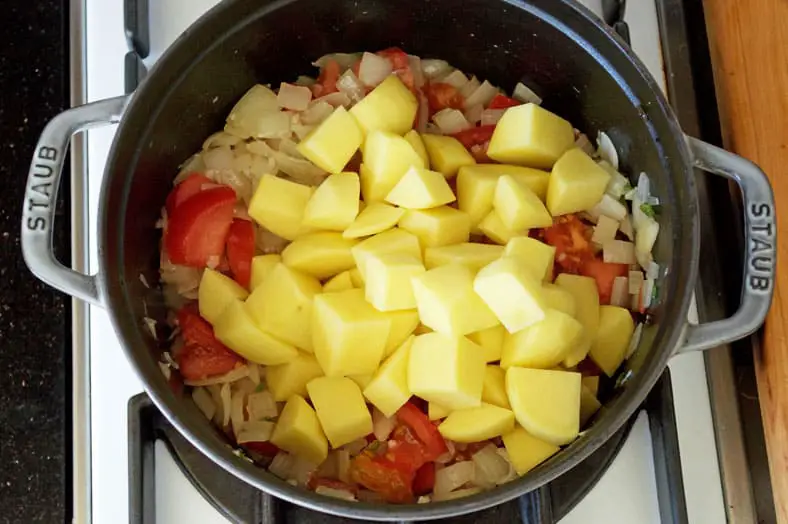
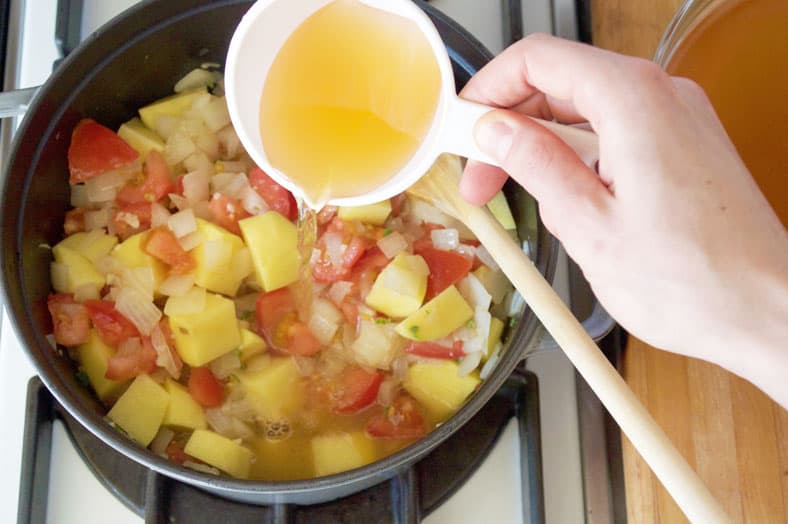

From there, you can just sit back, relax and wait until your ingredients have cooked through. At the end, you’ll mash your saltah together at the very end to get a thicker, heartier stew from it, but that’s the only real active element to preparing the recipe that’s left for you to do.
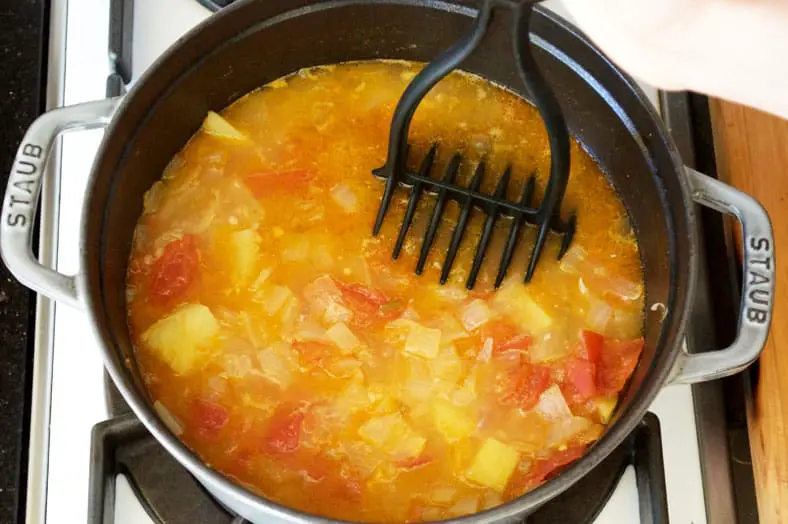
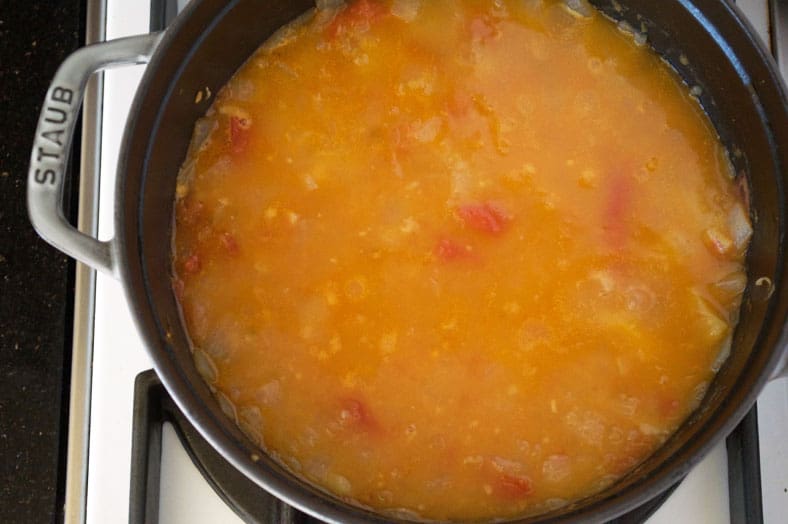
HULBAH AND ZHUG
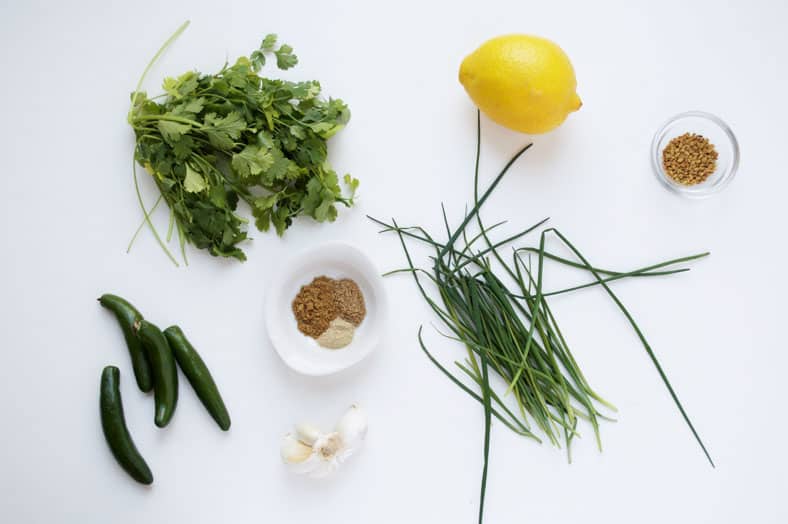
As delicious as saltah is, though, it bears repeating that a lot of the magic for this recipe comes from what goes with the stew. Saltah is usually eaten with Yemeni flatbread as your chief utensil, but the real magic happens with fragrant condiments like hulbah and zhug.
Hulbah is a frothy, thick paste made from ground fenugreek seeds that’s eventually combined with ingredients like tomato, garlic, and even a little green chili. The most traditional way to prepare hulbah used to involve grinding the seeds down by hand, although thankfully there are more modern tools to help expedite this process a bit.
Be mindful, though, that a little goes a long way when it comes to fenugreek! In fact, fenugreek has a very intense bitter flavor to it in its raw form, so you’ll want to soak it in water for at least an hour. Once you’ve done that, you can continue to mix and blend it together until you have a frothy, thick but still very smooth paste.
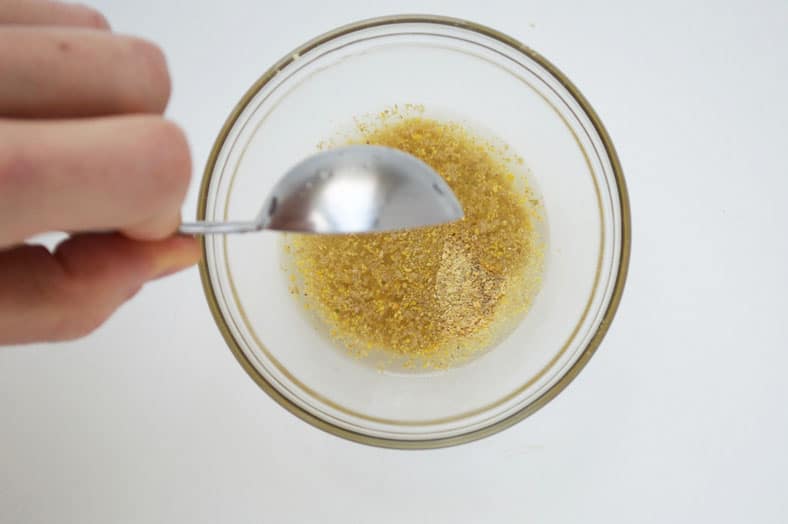

Zhug, on the other hand, is slightly different. It’s a zesty sauce made from a base of cilantro and green chilis, and it’s better to have bigger chunks in it than a smoother texture. This thicker texture actually gives a good counterbalance to the hilbah and makes for a richer overall saltah too!
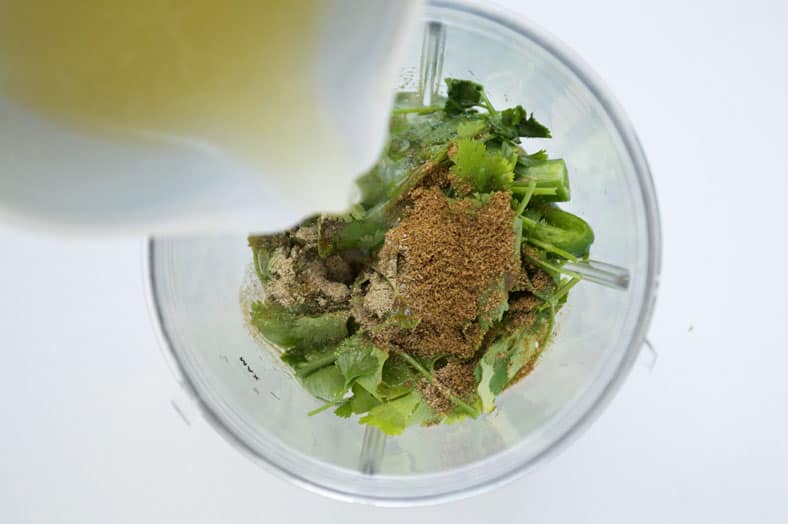
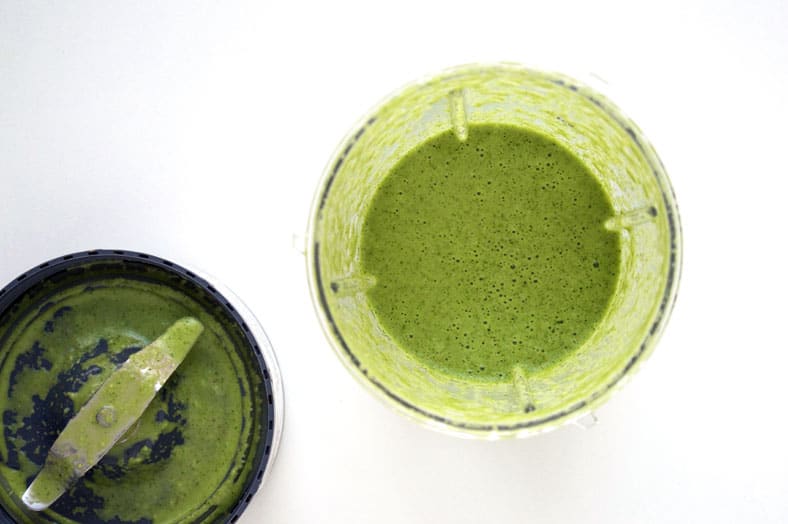
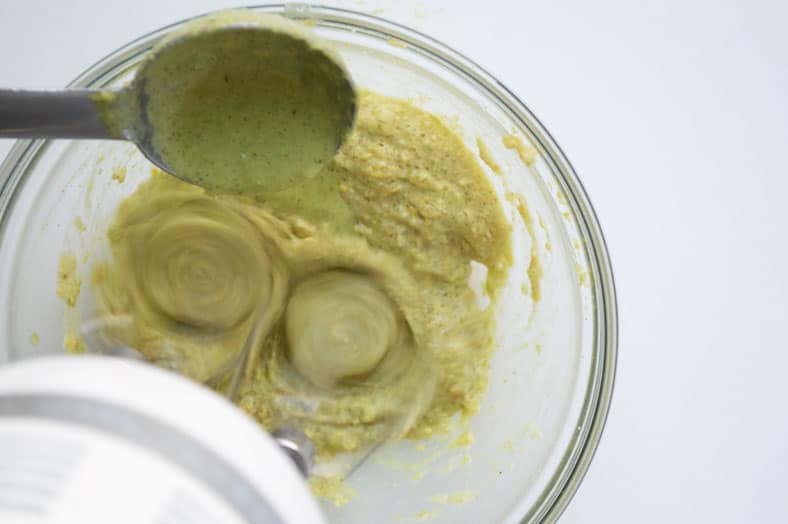
Preparing zhug is just as simple (if not simpler) than preparing your saltah. Just put all your ingredients together in a blender until you get to the right level of consistency. Place it in a container and refrigerate until it’s ready to serve – this helps the flavors meld together well.
You may have the saltah itself and the condiments ready to go, but you have yet one more step to really doing the dish right. You’ll need to top it all off… literally. Right before serving, take a spoonful of hulbah and place it over the top of your simmering pot of saltah. The heat will help the hulbah dissipate into a thin layer over top of the stew, which makes for a fantastic added flavor with each bite, and you’re done!

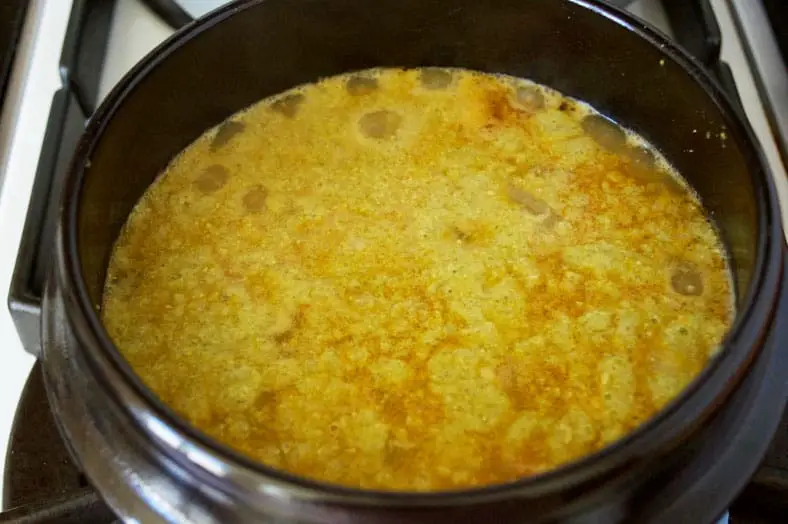
OUR TAKE ON THE RECIPE
For as popular as saltah is in Yemeni cuisine, we were actually surprised to see how seemingly incomplete a lot of available recipes were. Knowing that we had our work cut out for us, we started with a reference recipe with a good level of detail and built our way up from there.
First things first, though, we made a major change in including hilbah and zhug into the preparation process for our saltah. Yes, these are different recipes and condiments that can be used for any Yemeni dish, but they are so linked to many preparations of saltah that it only seemed right to include them here.
It helps that both chutneys are incredibly easy to prepare, and we actually benefited from some “economies of scale” when preparing them. When preparing extra zhug for future leftovers and other dishes, we found that it itself was a great ingredient to add into the preparation of hulbah. They share a lot of ingredients between them, so taking an extra tablespoon of zhug into your hulbah can be an efficient way to prepare both condiments well.
From there, we also set ourselves a challenge of making a vegan-friendly version of saltah. The meat version was incredibly tasty, but since we found that a lot of the unique flavors came from the entire saltah experience outside of the meat, we wanted to find a recipe that everyone could enjoy. As a result, we cut out ingredients like the meat, the beef broth, eggs and anything else that might be “diet restricting.”
As for more minor ingredient tweaks, we decided to clean up the recipe a bit. We preferred using extra virgin olive oil instead of vegetable oil, and we also cut out okra. Adding more potatoes and tomatoes, for us, led to a more agreeable vegan version of saltah.
No matter your preference – with meat or without, with condiments or without – saltah is a fantastic dish worth trying, and it’s a beautiful introduction into the exquisite Yemeni cuisine.
Enjoy!
